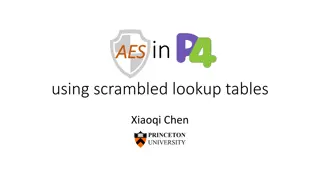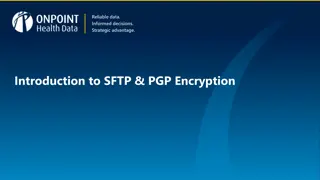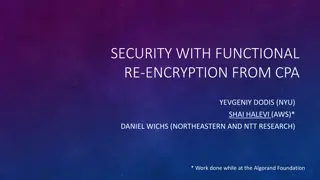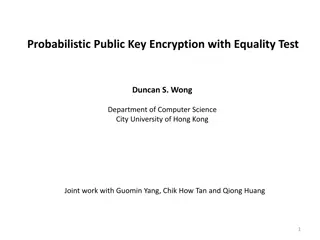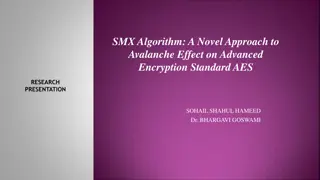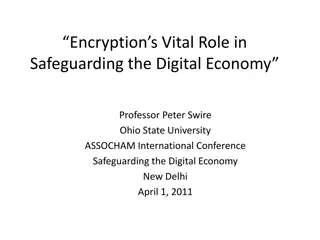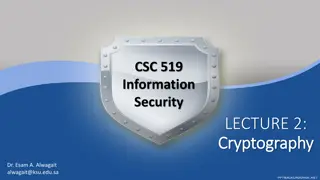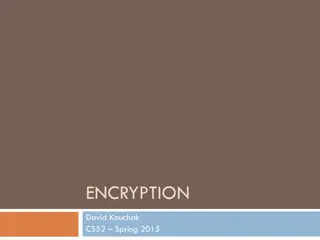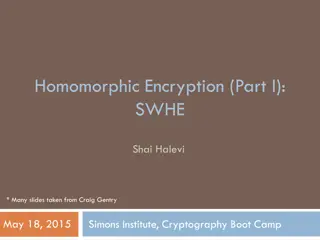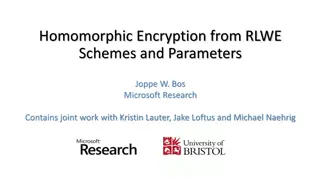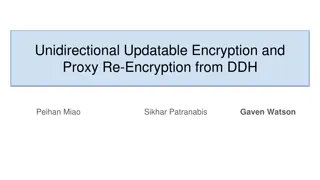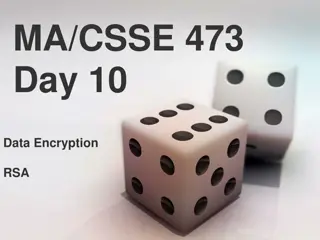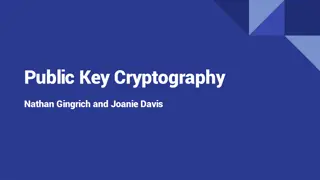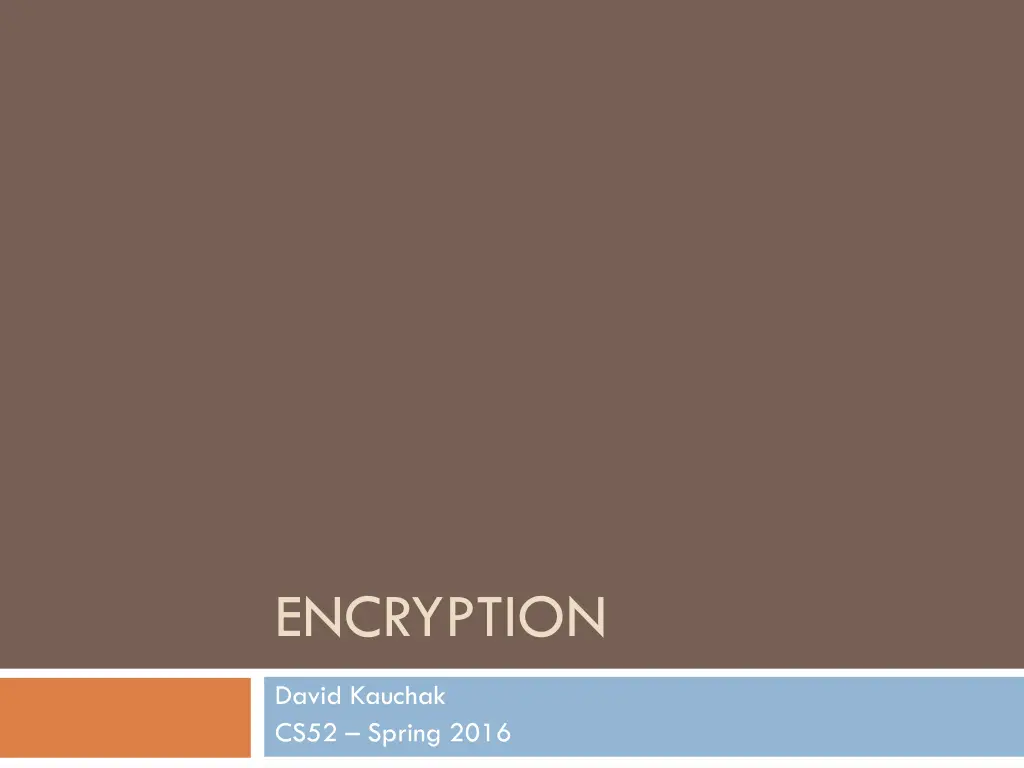
CS52 Spring 2016 Survey Feedback
Dive into student feedback on the CS52 Spring 2016 course covering aspects like class performance, difficulty levels, collaboration suggestions, and the desire for a more sociable Pomona CS community through mixers. The feedback also mentions academic preferences from the students and their thoughts on releasing homework solutions promptly to enhance their learning experience.
Download Presentation

Please find below an Image/Link to download the presentation.
The content on the website is provided AS IS for your information and personal use only. It may not be sold, licensed, or shared on other websites without obtaining consent from the author. If you encounter any issues during the download, it is possible that the publisher has removed the file from their server.
You are allowed to download the files provided on this website for personal or commercial use, subject to the condition that they are used lawfully. All files are the property of their respective owners.
The content on the website is provided AS IS for your information and personal use only. It may not be sold, licensed, or shared on other websites without obtaining consent from the author.
E N D
Presentation Transcript
ENCRYPTION David Kauchak CS52 Spring 2016
Admin Assignment 6
Survey: respondents 24 total respondents
Survey: comments It's rewarding to get the right answers after putting in lots of effort Making my code work after hours of coding!! The feeling of relief/ success of turning in assignments
Survey: comments More opportunities for collaboration or at least a less pessimistic attitude towards discussing assignments with classmates.
Survey: comments Practice questions for every test so we can have a good idea of what to expect on the tests.
Survey: comments Having a CS 52 mixer would allow students and mentors to interact in a more social environment creating a stronger Pomona CS community. Although CS snack and the weekly lunch with Prof. Kauchak are good events, those are very defined and formal events to perform informal actions like getting to know someone else better. A mixer with all the sections would also allow non- Pomona students to meet new students. Libations optional.
Survey: comments Haskell>SML and what I mean by it's just going ok is that I think we could learn more
Survey: comments Releasing homework solutions after we complete them.
Survey: comments I have honestly enjoyed the midterms
Encryption What is it and why do we need it?
Encryption I like bananas
Encryption I like bananas
Encryption: a bad attempt I like bananas
Encryption: the basic idea I like bananas I like bananas decrypt message encrypt message send encrypted message
Encryption: a better approach the hawk sleeps at midnight
Encryption uses Where have you seen encryption used?
Private key encryption I like bananas I like bananas decrypt message encrypt message send encrypted message
Private key encryption Any problems with this?
Public key encryption private key public key Two keys, one you make publicly available and one you keep to yourself
Public key encryption Share your public key with everyone
Public key encryption I like bananas I like bananas decrypt message encrypt message send encrypted message
Public key encryption I like bananas decrypt message Only the person with the private key can decrypt!
Modular arithmetic Normal arithmetic: a = b a is equal to b or a-b = 0 Modular arithmetic: a b (mod n) a-b = n*k for some integer k or a = b + n*k for some integer k or a % n = b % n (where % is the mod operator)
Modular arithmetic Which of these statements are true? 12 5 (mod 7) 52 92 (mod 10) 17 12 (mod 6) a-b = n*k for some integer k or a = b + n*k for some integer k or a % n = b % n (where % is the mod operator) 65 33 (mod 32)
Modular arithmetic Which of these statements are true? 12-5 = 7 = 1*7 12 % 7 = 5 = 5 % 7 12 5 (mod 7) 92-52 = 40 = 4*10 92 % 10 = 2 = 52 % 20 52 92 (mod 10) 17-12 = 5 17 % 6 = 5 12 % 6 = 0 17 12 (mod 6) 65-33 = 32 = 1*32 65 % 32 = 1 = 33 % 32 65 33 (mod 32)
Modular arithmetic properties If: a b (mod n) then: a mod n = b mod n mod /remainder operator congruence (mod n)
Modular arithmetic properties If: a b (mod n) then: a mod n = b mod n More importantly: (a+b) mod n = ((a mod n) + (b mod n)) mod n and (a*b) mod n = ((a mod n) * (b mod n)) mod n What do these say?
Modular arithmetic Why talk about modular arithmetic and congruence? How is it useful? Why might it be better than normal arithmetic? We can limit the size of the numbers we re dealing with to be at most n (if it gets larger than n at any point, we can always just take the result mod n) The mod operator can be thought of as mapping a number in the range 0 n-1
GCD What does GCD stand for?
Greatest Common Divisor gcd(a, b) is the largest positive integer that divides both numbers without a remainder gcd(25, 15) = ?
Greatest Common Divisor gcd(a, b) is the largest positive integer that divides both numbers without a remainder gcd(25, 15) = 5 15 25 15 25 Divisors: 5 3 1 5 1
Greatest Common Divisor gcd(a, b) is the largest positive integer that divides both numbers without a remainder gcd(100, 52) = ?
Greatest Common Divisor gcd(a, b) is the largest positive integer that divides both numbers without a remainder gcd(100, 52) = 4 52 100 100 50 25 20 10 52 13 Divisors: 4 2 1 5 4 2 1
Greatest Common Divisor gcd(a, b) is the largest positive integer that divides both numbers without a remainder gcd(14, 63) = ? gcd(7, 56) = ? gcd(23, 5) = ? gcd(100, 9) = ? gcd(111, 17) = ?
Greatest Common Divisor gcd(a, b) is the largest positive integer that divides both numbers without a remainder gcd(14, 63) = 7 gcd(7, 56) = 7 gcd(23, 5) = 1 gcd(100, 9) = 1 gcd(111, 17) = 1 Any observations?
Greatest Common Divisor When the gcd = 1, the two numbers share no factors/divisors in common If gcd(a,b) = 1 then a and b are relatively prime This a weaker condition than primality, since any two prime numbers are also relatively prime, but not vice versa
Greatest Common Divisor A useful property: If two numbers, a and b, are relatively prime (i.e. gcd(a,b) = 1), then there exists a c such that a*c mod b = 1
RSA public key encryption Have you heard of it? What does it stand for?
RSA public key encryption RSA is one of the most popular public key encryption algorithms in use RSA = Ron Rivest, Adi Shamir and Leonard Adleman
RSA public key encryption Choose a bit-length k Security increases with the value of k, though so does computation 1. Choose two primes p and q which can be represented with at most k bits 2. Let n = pq and (n) = (p-1)(q-1) () is called Euler s totient function 3. Find d such that 0 < d < n and gcd(d, (n)) = 1 4. Find e such that de mod (n) = 1 Remember, we know one exists! 5.
RSA public key encryption (n) = (p-1)(q-1) d: 0 < d < n and gcd(d, (n)) = 1 e: de mod (n) = 1 p: prime number q: prime number n = pq Given this setup, you can prove that given a number m: (me)d = med = m (mod n) What does this do for us, though?
RSA public key encryption (n) = (p-1)(q-1) d: 0 < d < n and gcd(d, (n)) = 1 e: de mod (n) = 1 p: prime number q: prime number n = pq Given this setup, you can prove that given a number m: m message What does this do for us, though?
RSA public key encryption (n) = (p-1)(q-1) d: 0 < d < n and gcd(d, (n)) = 1 e: de mod (n) = 1 p: prime number q: prime number n = pq Given this setup, you can prove that given a number m: (me) encrypted message What does this do for us, though?


